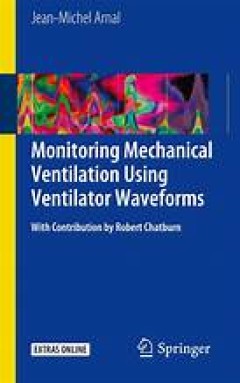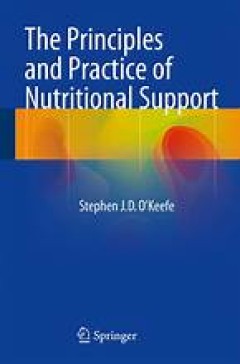Filter by

Critical thinking
How the concept of critical thinking emerged, how it has been defined, and how critical thinking skills can be taught. Critical thinking is regularly cited as an essential twenty-first century skill, the key to success in school and work. Given our propensity to believe fake news, draw incorrect conclusions, and make decisions based on emotion rather than reason, it might even be said that crit…
- Edition
- -
- ISBN/ISSN
- 9780262357340
- Collation
- 1 online resource (232 pages).
- Series Title
- -
- Call Number
- -

Knowledge justice :disrupting library and information studies through critica…
"Contributors analyze and re-envision the field and profession of library and information science from the perspective of critical race theory"--OCLC-licensed vendor bibliographic record.
- Edition
- -
- ISBN/ISSN
- 0262363208
- Collation
- 1 online resource.
- Series Title
- -
- Call Number
- -

Inventive minds :Marvin Minsky on education
Six essays by artificial intelligence pioneer Marvin Minsky on how education can foster inventiveness, paired with commentary by Minsky's former colleagues and students. Marvin Minsky was a pioneering researcher in artificial intelligence whose work led to both theoretical and practical advances. His work was motivated not only by technological advancement but also by the desire to understand t…
- Edition
- -
- ISBN/ISSN
- 0262350270
- Collation
- 1 online resource (248 pages).
- Series Title
- -
- Call Number
- -

Teaching computational thinking :an integrative approach for middle and high …
"This book provides a model for teaching computational thinking to middle and high school students across a broad range of school subjects"--OCLC-licensed vendor bibliographic record.
- Edition
- -
- ISBN/ISSN
- 0262366142
- Collation
- 1 online resource.
- Series Title
- -
- Call Number
- -

Between philosophy and social science :selected early writings
These essays reveal another side of Horkheimer, focusing on his remarkable contributions to critical theory in the 1930s. Max Horkheimer is well known as the director of the Frankfurt Institute for Social Research and as a sometime collaborator with Theodor Adorno, especially on their classic Dialectic of Enlightenment. These essays reveal another side of Horkheimer, focusing on his remarkable …
- Edition
- -
- ISBN/ISSN
- 0262275694
- Collation
- 1 online resource (440 pages).
- Series Title
- -
- Call Number
- -

Re-presenting the good society
A proposal for negotiating the tension between an anti-authoritarian impulse and a guiding idea of context-transcending validity in critical social theory. Contemporary critical social theories face the question of how to justify the ideas of the good society that guide their critical analyses. Traditionally, these more or less determinate ideas of the good society were held to be independent o…
- Edition
- -
- ISBN/ISSN
- 9780262270779
- Collation
- 1 online resource (x, 264 pages).
- Series Title
- -
- Call Number
- -
Retinopathy of Prematurity: A NICU Based Approach
- Edition
- -
- ISBN/ISSN
- 978-1-83969-451-6
- Collation
- -
- Series Title
- -
- Call Number
- -

Hemodynamic Monitoring in the ICU
This book describes the pathophysiological significance of the hemodynamic monitoring parameters available to the clinician and their role in providing reliable and reproducible information on the cardiocirculatory status of a patient in shock. It is explained how measurements of these parameters enable the intensivist to understand the patient’s condition and to make more informed treatment …
- Edition
- 1
- ISBN/ISSN
- 978-3-319-29430-8
- Collation
- Kedokteran
- Series Title
- -
- Call Number
- 617

Monitoring Mechanical Ventilation Using Ventilator Waveforms
This book discusses the interpretation of mechanical ventilator waveforms. Each page shows a screenshot from a real patient and explains one or two messages. It starts with basic information about the waveforms and goes on to address passive and spontaneous ventilation, non-invasive ventilation and specific measurements such as pressure-volume curves and esophageal pressure. Step by step, reade…
- Edition
- 1
- ISBN/ISSN
- 978-3-319-58655-7
- Collation
- Mekanika
- Series Title
- -
- Call Number
- 532

The Principles and Practice of Nutritional Support
This book provides the reader with an understanding of human nutritional and metabolic physiology and how it goes wrong in illness. Divided into three major sections, the volume instructs the reader on how and when to use nutritional support, and includes a summary of the published outcome studies on the application of nutritional support to the management of common illnesses. In this way, the …
- Edition
- 1
- ISBN/ISSN
- 978-1-4939-1779-2
- Collation
- Kedokteran
- Series Title
- -
- Call Number
- 617
 Computer Science, Information & General Works
Computer Science, Information & General Works  Philosophy & Psychology
Philosophy & Psychology  Religion
Religion  Social Sciences
Social Sciences  Language
Language  Pure Science
Pure Science  Applied Sciences
Applied Sciences  Art & Recreation
Art & Recreation  Literature
Literature  History & Geography
History & Geography